 W
WThe 30-degree rule is a basic film editing guideline that states the camera should move at least 30 degrees relative to the subject between successive shots of the same subject. If the camera moves less than 30 degrees, the transition between shots can look like a jump cut—which could jar the audience and take them out of the story. The audience might focus on the film technique rather than the narrative itself.
 W
WThe archetypal action hero or action heroine is the protagonist of an action film or other entertainment which portrays action and adventure. Other media in which such heroes appear include swashbuckler films, Westerns on television, old-time radio, adventure novels, dime novels, pulp magazines, and folklore.
 W
WIn American films of the Western genre between the 1920s and the 1940s, white hats were often worn by heroes and black hats by villains to symbolize the contrast in good versus evil. The 1903 short film The Great Train Robbery was the first to apply this convention. Two exceptions to the convention were portrayals by William Boyd, who wore dark clothing as Hopalong Cassidy, and Robert Taylor's portrayal in the film The Law and Jake Wade (1958).
 W
WCiné film or cine film is the term commonly used in the UK to refer to the 8 mm, Super 8, 9.5 mm, and 16 mm motion picture film formats used for home movies. It is not normally used to refer to professional formats such as 35 mm or 70 mm film, and is incorrect if applied to any video format. In the US, "movie film" is the common informal term for all formats and "motion picture film" the formal one.
 W
WClosing credits or end credits are a list of the cast and crew of a particular motion picture, television program, or video game. Where opening credits appear at the beginning of a work, closing credits appear close to, or at the very end of a work. A full set of credits can include the cast and crew, but also production sponsors, distribution companies, works of music licensed or written for the work, various legal disclaimers, such as copyright and more.
 W
WIn British film classifications, the E certificate is an unofficial rating sometimes applied to video titles released in the United Kingdom which are exempt from being classified by the British Board of Film Classification (BBFC) as any of the other certificate categories.
 W
WA film can is the light-tight container used to enclose film stock. They are typically a circular box pressed from thin sheet metal, but plastic examples are also used. Film cans are used to hold unexposed film, exposed film ready for developing and also for the distribution of completed film prints. The last of these does not require the can to be light-tight, but environmental protection and exclusion of dust makes a similar container just as useful.
 W
WFly-on-the-wall is a style of documentary-making used in film and television production. The name derived from the idea that events are seen candidly, as a fly on a wall might see them. In the purest form of fly-on-the-wall documentary-making, the camera crew works as unobtrusively as possible; however, it is also common for participants to be interviewed, often by an off-camera voice.
 W
WIn filmmaking and video production, footage is raw, unedited material as originally filmed by a movie camera or recorded by a video camera, which typically must be edited to create a motion picture, video clip, television show or similar completed work.
 W
WFor Your Consideration is a heading frequently used in advertisements in entertainment trade publications such as Variety, Backstage, and The Hollywood Reporter, as well as outdoor advertising, direct mailers, and events in Los Angeles. They are specifically directed towards members of awards voting groups in the entertainment industry, like the Academy of Motion Picture Arts and Sciences that annually presents the Academy Awards celebrating the best in motion pictures, or the Academy of Television Arts & Sciences which presents the Primetime Emmy Awards for television.
 W
WA frame line is the unused space that separates two adjacent images, or film frames, on the release print of a motion picture. They can vary in width; a 35mm film with a 1.85:1 hard matte has a frame line approximately 8 mm (0.3 in) high, whereas both a full frame negative and the anamorphic format have very narrow frame lines, with the frames very close together. When a film is properly projected, the frame lines should not be visible to the audience and are typically cropped out in projection with an aperture mask.
 W
WA high-angle shot is a cinematic technique where the camera looks down on the subject from a high angle and the point of focus often gets "swallowed up".
 W
WHyperlapse or moving time-lapse is a technique in time-lapse photography for creating motion shots. In its simplest form, a hyperlapse is achieved by moving the camera a short distance between each shot. The first film using the hyperlapse technique dates to 1995.
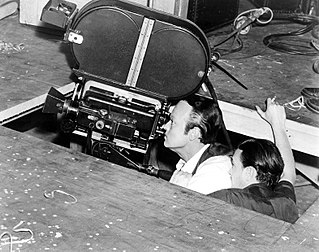 W
WIn cinematography, a low-angle shot, is a shot from a camera angle positioned low on the vertical axis, anywhere below the eye line, looking up. Sometimes, it is even directly below the subject's feet. Psychologically, the effect of the low-angle shot is that it makes the subject look strong and powerful.
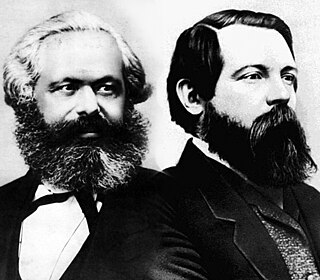 W
WMarxist film theory is one of the oldest forms of film theory.
 W
WContracted from the term micro reciprocal degree, the mired is a unit of measurement used to express color temperature. It is given by the formula
 W
WAn onboard camera or in-car camera is a camera placed upon a moving object, such as a vehicle.
 W
WPace, also called rhythm or tempo, is the rate of activity or movement, such as in running or the flow of events in an entertainment piece.
 W
WA pantograph is a commonly used overhead suspension system for lamps and audio and video monitors in television studios. It is also used on a smaller scale in many photography studios. Using either motor driven cables or a spring system, the pantograph can be balanced so that a light touch can readjust the height of the load. The system usually works through a series of connected diagonals that can be compressed or extended to adjust the height of the rig.
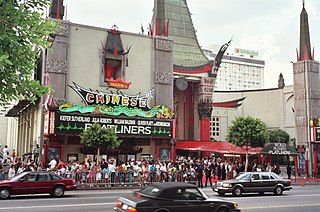 W
WA premiere or première is the debut of a play, film, dance, or musical composition.
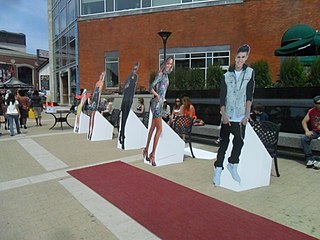 W
WA standee is an American term for a large self-standing display promoting a movie, product or event, or point-of-sale advertising, often in the form of a life-size cut-out figure. They are typically made of foam-board, and may range from large self-standing posters to elaborate three-dimensional display devices with moving parts and lights.
 W
WA stunt team is a crew of stunt performers that follow the direction of the stunt coordinator to collectively participate and execute an action sequence for film, television series, commercials, theater or live performance.
 W
WTrollywood is the informal name for a film production facility in Trollhättan, Sweden. Movies shot there include Fucking Åmål, Dancer in the Dark, Manderlay and Dogville. The movie studio Film i Väst centered there produces about half of the Swedish full-length films.
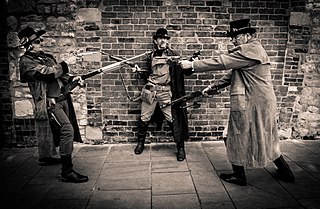 W
WIn cinema, a trope is what The Art Direction Handbook for Film defines as "a universally identified image imbued with several layers of contextual meaning creating a new visual metaphor".